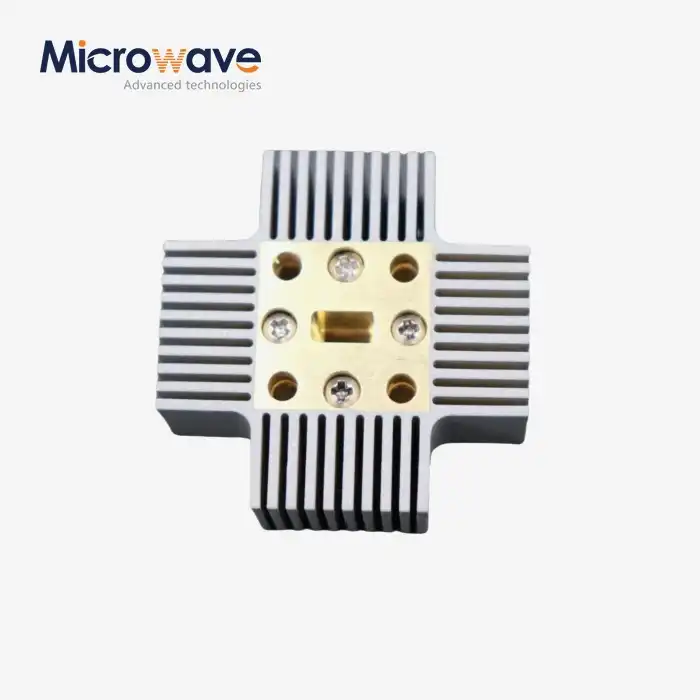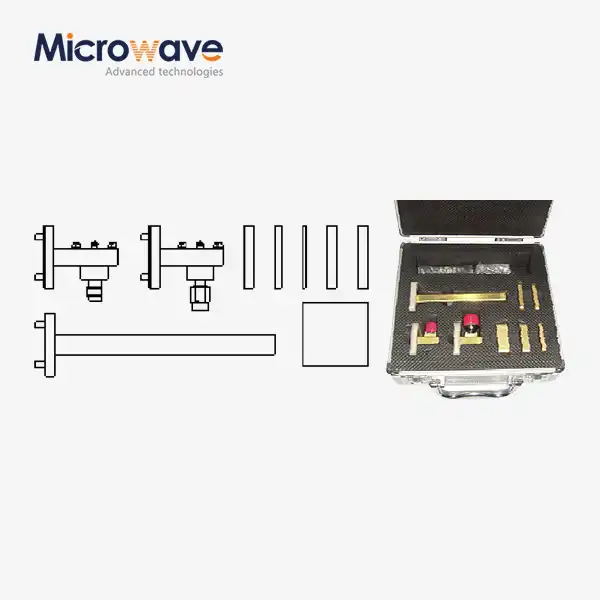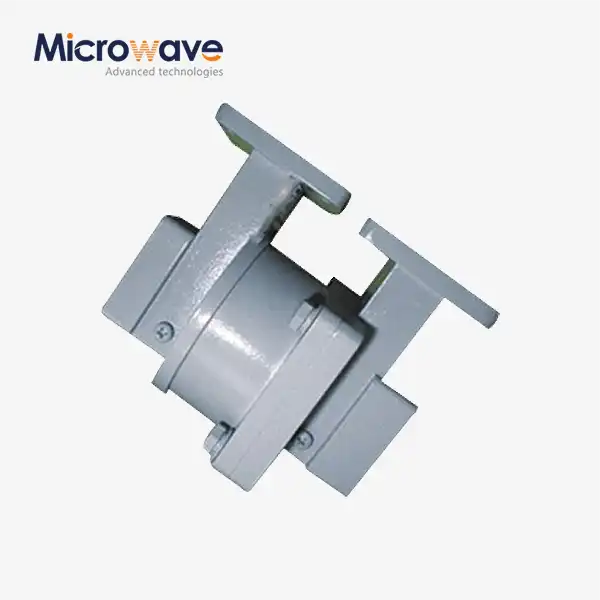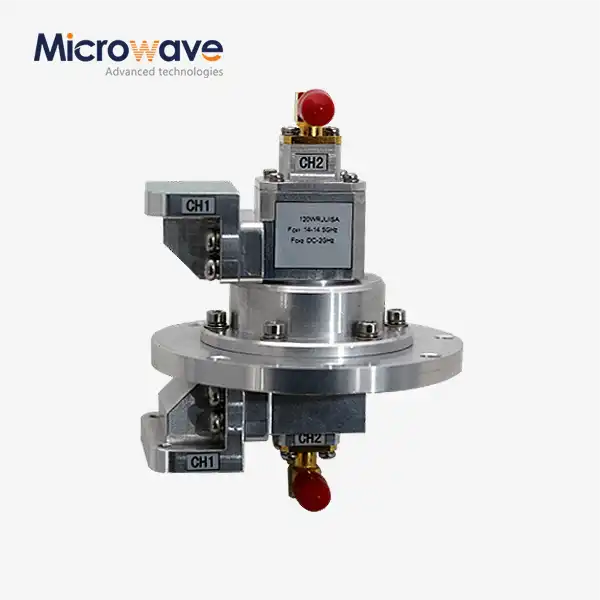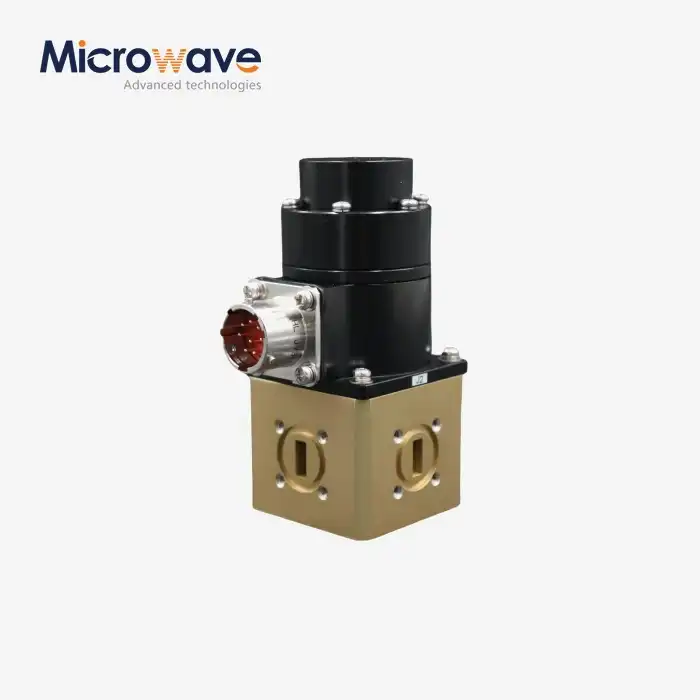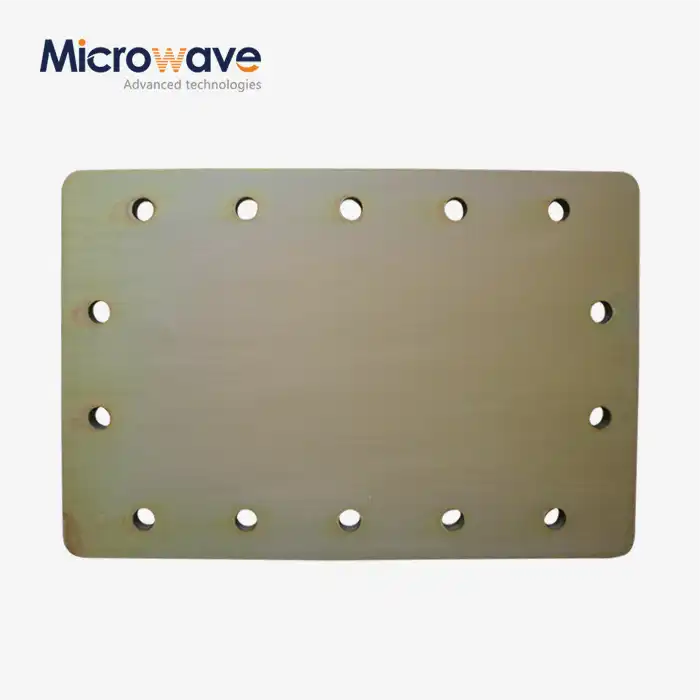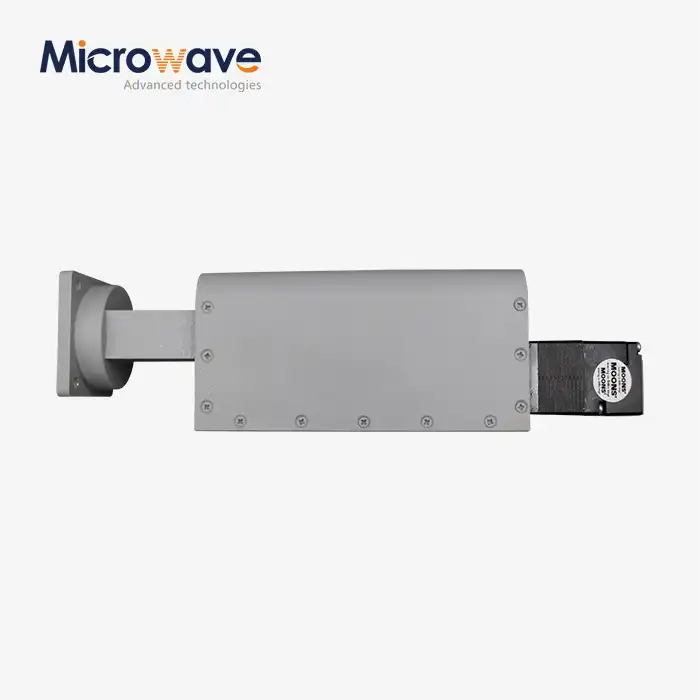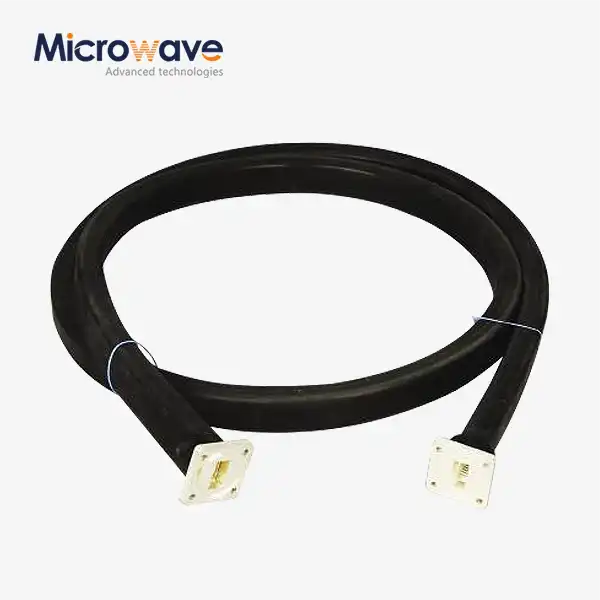Precision Signal Control for Satellite Ground Stations: The Attenuator Solution
In today's satellite communication landscape, ground station operators face a critical challenge: maintaining optimal signal integrity while managing varying power levels across complex RF systems. When signal distortion, power imbalances, or interference threaten mission-critical communications, the solution lies in precision signal control through advanced Waveguide Coupling Fixed Attenuator technology. This comprehensive guide addresses the essential role of attenuators in satellite ground station operations, offering proven solutions for engineers and system integrators seeking reliable, high-performance signal management that ensures uninterrupted satellite communications across demanding applications.
Understanding Waveguide Coupling Fixed Attenuator Technology in Satellite Systems
Satellite ground stations operate under extreme precision requirements where even minor signal variations can compromise communication integrity. The Waveguide Coupling Fixed Attenuator represents a cornerstone technology in modern satellite communication infrastructure, providing essential signal control capabilities that enable reliable data transmission between Earth-based stations and orbiting satellites. These sophisticated devices utilize advanced coupling mechanisms to achieve precise signal attenuation while maintaining waveform integrity across broad frequency ranges.

Core Technology and Operating Principles
The Waveguide Coupling Fixed Attenuator operates on fundamental principles of electromagnetic wave propagation within guided media. Unlike traditional resistive attenuators that introduce signal distortion, coupling-based attenuators utilize directional coupling technology to sample and redirect portions of the signal energy. This approach ensures minimal signal degradation while providing accurate attenuation levels essential for satellite ground station applications. Advanced Microwave Technologies' Waveguide Coupling Fixed Attenuator incorporates high-precision broadband fixed attenuation based on full-bandwidth, high-directivity, low-coupling frequency response couplers. This design enables consistent performance across frequencies ranging from 0.5 to 110 GHz, making it suitable for both legacy satellite systems and next-generation high-frequency applications including 5G and future 6G satellite networks. The coupling mechanism operates by extracting a precise fraction of the input signal through carefully engineered waveguide structures. The extracted energy is then either absorbed in matched loads or directed to monitoring equipment, depending on the specific application requirements. This approach maintains excellent return loss characteristics while providing stable attenuation values across temperature variations and mechanical stress conditions commonly encountered in satellite ground station environments.
High-Power Applications and Directional Configurations
Modern satellite ground stations often handle high-power signals that require specialized attenuation solutions. The Waveguide Coupling Fixed Attenuator addresses these requirements through carefully designed power handling capabilities and directional configurations. In high-power applications, coupled attenuators can be configured as either unidirectional or bidirectional devices, each offering specific advantages depending on system requirements. Unidirectional high-power configurations provide cost-effective solutions by eliminating the need for high-power loads on both signal paths. This approach reduces system complexity, weight, and cost while maintaining excellent performance characteristics. The unidirectional design is particularly beneficial in satellite uplink applications where signal flow is primarily in one direction and space constraints are critical considerations.
Signal Management Challenges in Modern Satellite Ground Stations
Contemporary satellite ground stations face increasingly complex signal management challenges as satellite constellations expand and communication demands grow. For most missions the communication system enables the spacecraft to transmit data and telemetry to Earth, receive commands from Earth, and relay information, requiring precise control over signal levels to maintain reliable connections across varying operational conditions.
Power Level Optimization and Signal Integrity
Satellite communication systems must accommodate dynamic range requirements that span multiple orders of magnitude. Low Earth Orbit (LEO) satellites experience significant signal level variations due to changing distances and atmospheric conditions, while geostationary satellites require consistent signal management to compensate for path loss variations and weather-related attenuation. The Waveguide Coupling Fixed Attenuator provides essential signal level control that enables ground station operators to optimize receiver sensitivity while preventing overload conditions. This capability is particularly critical in multi-satellite tracking scenarios where different satellites may require significantly different signal handling approaches. By incorporating precise attenuation control, ground stations can maintain optimal signal-to-noise ratios while protecting sensitive receiver components from damage due to excessive signal levels. Signal integrity preservation represents another critical challenge in modern satellite communications. Traditional attenuation methods often introduce phase distortion, amplitude ripple, or harmonic generation that can degrade communication quality. The coupling-based approach used in advanced Waveguide Coupling Fixed Attenuator designs maintains excellent signal fidelity by avoiding resistive elements that typically introduce distortion.
Frequency Band Management and Broadband Performance
Modern satellite systems operate across multiple frequency bands simultaneously, requiring attenuation solutions that maintain consistent performance across broad frequency ranges. The Waveguide Coupling Fixed Attenuator addresses this requirement through advanced broadband design techniques that ensure stable attenuation characteristics from 0.5 to 110 GHz. This broadband capability enables ground stations to handle diverse satellite services including traditional C-band and Ku-band communications, high-throughput Ka-band systems, and emerging millimeter-wave applications. The consistent performance across these frequency ranges eliminates the need for multiple specialized attenuators, reducing system complexity and maintenance requirements.
Technical Specifications and Performance Characteristics
The performance of Waveguide Coupling Fixed Attenuator systems directly impacts satellite ground station reliability and operational efficiency. Key specifications include voltage standing wave ratio (VSWR), power handling capability, frequency response flatness, and temperature stability. These parameters must be carefully optimized to meet the demanding requirements of satellite communication applications.
VSWR and Impedance Matching
Low VSWR characteristics are essential for maintaining signal integrity and preventing reflections that can cause interference or damage to transmitter equipment. Advanced Waveguide Coupling Fixed Attenuator designs achieve VSWR values typically below 1.15:1 across their operating frequency range, ensuring excellent impedance matching with connected equipment. The low VSWR performance results from careful attention to waveguide discontinuities and coupling structure design. By minimizing impedance variations along the signal path, these attenuators maintain excellent return loss characteristics that protect upstream equipment while ensuring accurate signal delivery to downstream components. Power handling capability represents another critical specification for satellite ground station applications. Modern Waveguide Coupling Fixed Attenuator designs can handle continuous wave power levels exceeding 100 watts while maintaining stable performance characteristics. This capability enables their use in high-power uplink applications where signal levels may reach several hundred watts.
Material Selection and Construction Quality
The choice of construction materials significantly impacts attenuator performance and longevity in satellite ground station environments. Advanced designs utilize high-conductivity materials such as copper or aluminum alloys that provide excellent electrical performance while maintaining mechanical stability across temperature variations. Surface treatment and plating options further enhance performance and environmental resistance. Gold plating on critical RF surfaces ensures consistent electrical contact and corrosion resistance, while anodized aluminum construction provides lightweight durability suitable for mobile or portable ground station applications. The waveguide size compatibility range spans from WR10 to WR230, accommodating frequencies from millimeter-wave applications down to traditional microwave bands. This broad compatibility ensures that Waveguide Coupling Fixed Attenuator solutions can be integrated into virtually any satellite ground station configuration.
Applications Across Satellite Communication Systems
Satellite ground stations utilize Waveguide Coupling Fixed Attenuator technology across diverse applications ranging from commercial telecommunications to scientific research missions. Each application presents unique requirements and challenges that must be addressed through careful system design and component selection.

Commercial Satellite Communications
Commercial satellite operators rely on Waveguide Coupling Fixed Attenuator systems to maintain service quality and prevent equipment damage in high-traffic communication networks. The ELT Systems Attenuator is a high-performance device designed to reduce the power of RF signals while maintaining signal integrity. It provides precise control over signal levels, making it ideal for fine-tuning and balancing RF systems in satellite communications and other critical applications. Direct-to-home broadcasting services utilize these attenuators to manage uplink power levels and prevent interference between adjacent satellites. The precise control capabilities enable operators to maximize frequency reuse efficiency while maintaining acceptable interference levels. In VSAT networks, attenuators provide essential signal level control that enables reliable operation across diverse geographic regions with varying atmospheric conditions. High-throughput satellite (HTS) systems present particular challenges due to their high data rates and complex beam management requirements. Waveguide Coupling Fixed Attenuator systems enable ground stations to optimize signal levels for different beam positions and time slots, ensuring consistent service quality across the satellite coverage area.
Defense and Aerospace Applications
Military and aerospace applications demand the highest levels of reliability and performance from satellite communication equipment. Waveguide Coupling Fixed Attenuator systems used in these applications must meet stringent environmental and electromagnetic compatibility requirements while providing precise signal control under extreme operating conditions. Satellite tracking and command systems rely on accurate signal level management to maintain communication links with maneuvering spacecraft. The ability to quickly adjust signal levels enables ground operators to compensate for spacecraft orientation changes or unexpected signal variations that could otherwise compromise mission success. Radar and surveillance satellites require specialized ground station configurations that can handle the high peak power levels and rapid signal variations characteristic of these systems. Waveguide Coupling Fixed Attenuator technology provides the necessary power handling capability and response speed to support these demanding applications.
Scientific and Research Applications
Space science missions often require unprecedented precision in signal measurement and control. Waveguide Coupling Fixed Attenuator systems enable researchers to calibrate sensitive instruments and maintain measurement accuracy across extended observation periods. Deep space communication systems present unique challenges due to the extremely weak signal levels involved. Precision attenuation control becomes essential for calibrating receiver systems and maintaining measurement accuracy when signal levels may be only a few decibels above the noise floor. Radio astronomy applications utilize these attenuators to manage signal levels from multiple antenna feeds and prevent receiver overload from strong terrestrial interference sources. The excellent dynamic range and low noise characteristics of coupling-based attenuators make them ideal for these sensitive measurement applications.
Conclusion
Precision signal control through advanced Waveguide Coupling Fixed Attenuator technology forms the foundation of reliable satellite ground station operations. These critical components enable optimal communication performance while protecting expensive equipment from damage due to signal level variations.
Cooperate with Advanced Microwave Technologies Co., Ltd.
Advanced Microwave Technologies Co., Ltd stands as a premier China Waveguide Coupling Fixed Attenuator manufacturer with over 20 years of specialized experience in microwave technology. As a leading China Waveguide Coupling Fixed Attenuator supplier, we offer comprehensive solutions backed by ISO 9001:2015 certification and state-of-the-art 24m Microwave Darkroom testing facilities. Our China Waveguide Coupling Fixed Attenuator factory delivers high-quality products for China Waveguide Coupling Fixed Attenuator wholesale requirements, with Waveguide Coupling Fixed Attenuator for sale featuring competitive Waveguide Coupling Fixed Attenuator price points and High Quality Waveguide Coupling Fixed Attenuator performance. Contact our expert team at craig@admicrowave.com for customized solutions that meet your satellite ground station requirements and experience our fast delivery, technical support, and proven after-sales capabilities.
FAQ
Q: What frequency range do Waveguide Coupling Fixed Attenuators support for satellite applications?
A: Our attenuators operate from 0.5 to 110 GHz, covering all satellite communication bands including C, Ku, Ka, and millimeter-wave frequencies.
Q: How do coupling-based attenuators differ from resistive attenuators in satellite systems?
A: Coupling attenuators maintain better signal integrity, offer lower VSWR, and provide superior power handling compared to traditional resistive designs.
Q: What power levels can Waveguide Coupling Fixed Attenuators handle in ground station applications?
A: Our high-power models handle continuous wave power exceeding 100 watts while maintaining stable performance characteristics.
Q: Are custom attenuation values available for specific satellite ground station requirements?
A: Yes, we provide fully customizable designs including attenuation levels, waveguide sizes, and materials to meet your exact specifications.
References
1. Johnson, R.C. & Jasik, H. "Antenna Engineering Handbook, Fourth Edition." McGraw-Hill Professional, 2007.
2. Balanis, Constantine A. "Antenna Theory: Analysis and Design, Fourth Edition." John Wiley & Sons, 2016.
3. Pozar, David M. "Microwave Engineering, Fourth Edition." John Wiley & Sons, 2011.
4. Collin, Robert E. "Foundations for Microwave Engineering, Second Edition." IEEE Press, 2001.




